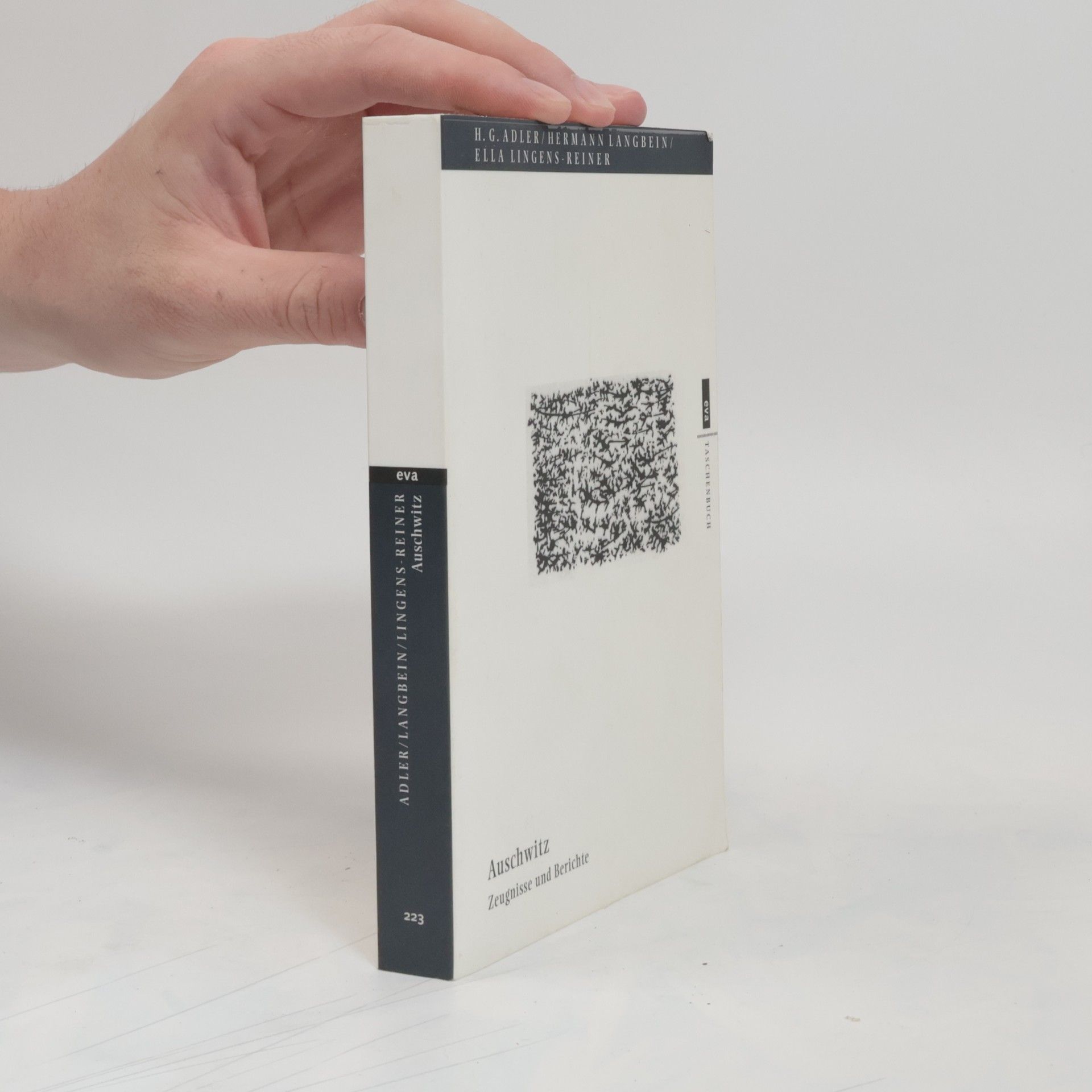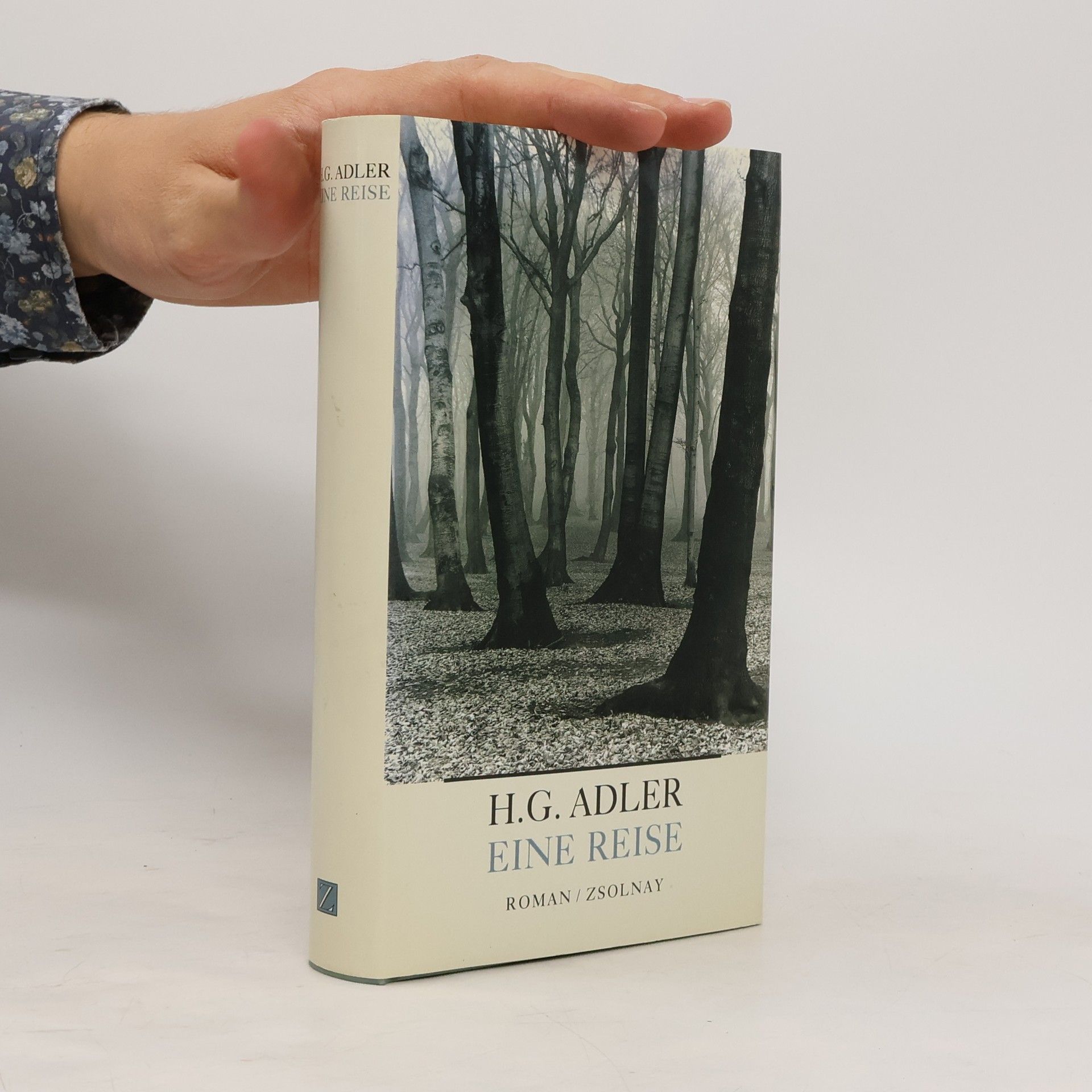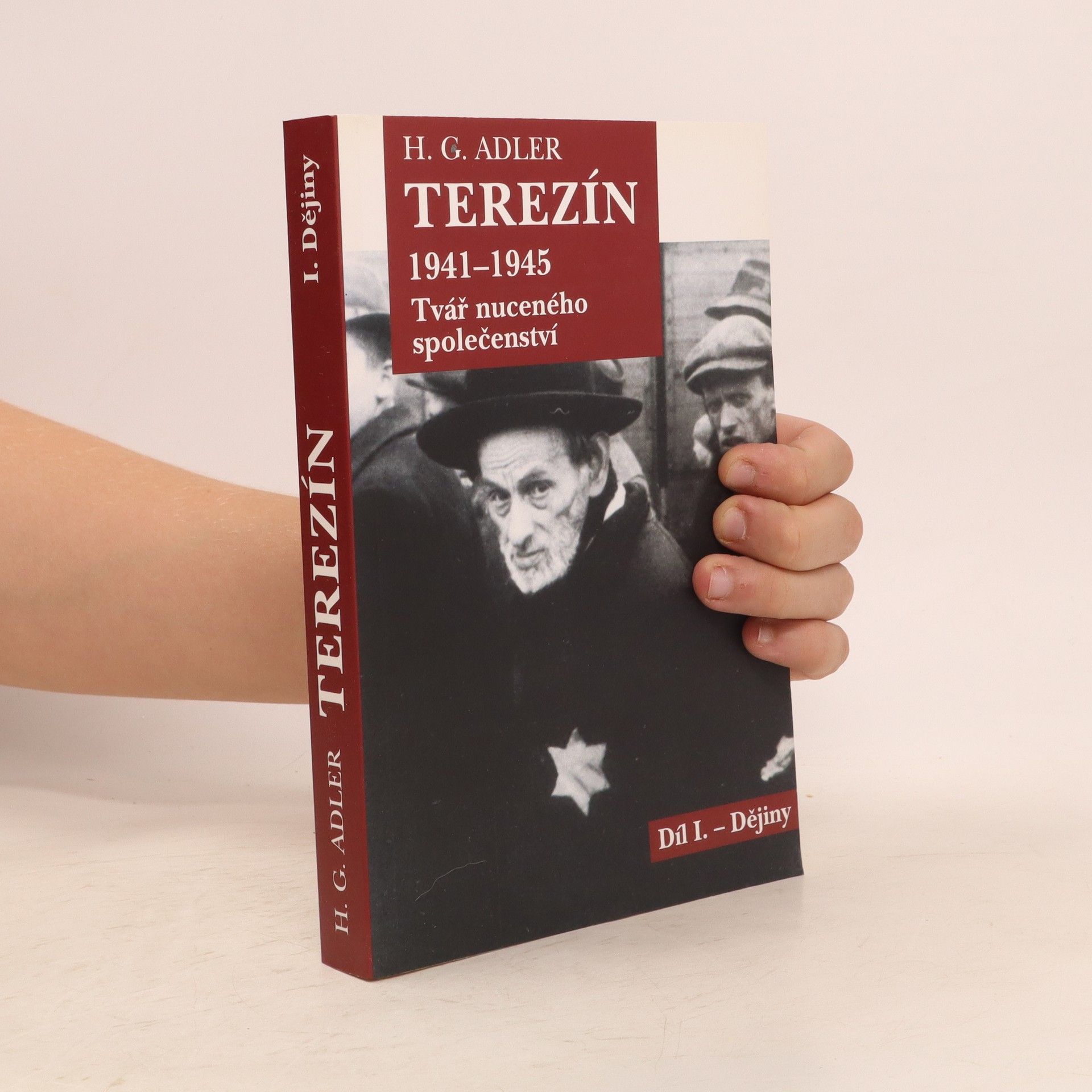First published in 1955, with a revised edition appearing five years later, H. G. Adler's Theresienstadt, 1941-1945 is a foundational work in the field of Holocaust studies. It is the single most detailed account of any concentration camp and is now available in English for the first time.
H. G. Adler Livres







Only recently available for the first time in English, Panorama is the newly rediscovered first novel of H. G. Adler, a modernist master whose work has been compared to that of Kafka, Joyce, and Solzhenitsyn. A brilliant epic told in ten distinct vignettes, Panorama is a portrait of a place and people soon to be destroyed, as seen through the eyes of the young Josef Kramer. It moves from the pastoral World War I era Bohemia of Josef s youth, to a German boarding school full of creeping prejudice, through an infamous extermination camp, and finally to Josef s self-imposed exile abroad, achieving veracity and power through a stream-of-consciousness style reminiscent of our greatest modern masters. The author of six novels as well as the monumental account of his experiences in a Nazi labor camp, Theresienstadt 1941 1945, H. G. Adler is an essential author with unique historical importance. Panorama is lasting evidence of both the torment of his life and the triumph of his gifts.
H. G. Adler, „der versteinerte Jüngling, der ein Mann“ wurde, ist vielen als Autor des Standardwerks „Theresienstadt, 1941-45“ oder der Studie über die Deportation der Juden aus Deutschland („Der verwaltete Mensch“) ein Begriff. Andere schätzen H. G. Adler mehr als Romancier oder Lyriker. Wieder andere kennen ihn vor allem als langjährigen Präsidenten des PEN-Zentrums deutschsprachiger Autoren im Ausland. In dieser Textsammlung, bestehend aus autobiographischen Schriften, Essays und Gedichten, kommt H. G. Adler in seiner ganzen Vielfalt zu Wort. Äußerer Anlaß ist die Ausstellung „H. G. Adler - Franz Baermann Steiner - Elias Canetti: Ein Freundeskreis im Londoner Exil“ im Schiller Nationalmuseum/Deutsches Literaturarchiv in Marbach im September 1998. Außerdem jährt sich H. G. Adlers Todestag am 20. August 1998 zum zehnten Mal. Grund genug für die Wiederentdeckung eines wichtigen Exponenten der Exilliteratur. Das von H. G. Adlers Sohn Jeremy zusammengestellte Buch enthält Interviews mit H. G. Adler, die eine nie verfaßte Autobiographie ersetzen [alternativ: in denen er über seine Herkunft plaudert]; außerdem Essays zur Holocaust-Forschung; und schließlich als Erstveröffentlichung der „Theresienstädter Bilderbogen“ sowie weitere Gedichte aus dem Nachlaß. Im Anhang finden sich weiterführende Literaturhinweise sowie ein Nachwort von Jeremy Adler, der als Professor für neuere deutsche Literatur in London lehrt.
Adlerova monografie o dějinách židovského tábora v Terezíně je jedním z nejvýznamnějších a nejdůkladnějších děl o holocaustu, které ovlivnilo poválečnou debatu o nacistických zločinech. Autor popisuje historii vzniku tábora, jeho promyšlenou organizaci a krutou nacistickou mašinerii, která stála v pozadí jeho vzniku a fungování. Těžiště práce však spočívá v podrobném vylíčení každodenního života jeho nedobrovolných židovských obyvatel, tedy onoho "nuceného společenství", jak jej autor nazývá. Kniha je výjimečná především tím, že Adler jako bystrý pozorovatel a hluboký myslitel předkládá čtenáři nejen ohromující množství nashromážděných informací o táborovém životě, ale také jedinečnou sociologickou a psychologickou analýzu chování lidí v extrémních a nelidských podmínkách, která ne vždy odpovídá dnešním představám. Především díky tomu se jeho práce stala pro pochopení fenoménu Terezína zcela nepostradatelnou.
Eine Reise
- 314pages
- 11 heures de lecture
Der 1920 in Prag geborene H. G. Adler war einer derjenigen, den die Nazis auf die tödliche Reise schickten. Diese führte ihn von Theresienstadt nach Auschwitz, wo seine Frau und deren Mutter ermordet wurden, und weiter in die Lager Niederorschel und Langenstein-Zwieberge, wo er 1945 von den Amerikanern befreit wurde. In dem 1950/51 in London geschriebenen Roman versucht er, dem Grauen dieser Jahre eine Sprache zu verleihen, die der Alltäglichkeit der Bedrohung nahekommt. "'Eine Reise' halte ich für ein Meisterwerk ... Ich möchte sagen, daß Adler der Hoffnung in der modernen Literatur wieder eingeführt hat.„ Elias Canetti “In 'Eine Reise' sind Zeugenschaft und Ästhetik der Moderne eine einzigartige Verbindung eingegangen." Judith Klein, Frankfurter Rundschau
Auschwitz
- 316pages
- 12 heures de lecture
Diese Zeugnisse und Berichte aus Auschwitz sind nach wie vor die umfassendste Dokumentation der Wirklichkeit im größten nationalsozialistischen Konzentrations- und Vernichtungslager - erschütternde Dokumente der wenigen Überlebenden: die zermürbende Arbeit, der Kampf ums erbärmliche Überleben, die Grausamkeit der Capos, Folter, Flucht, Tod. Und es sind Zeugnisse des Widerstands im Lager. Beispiele von Standhaftigkeit und Menschlichkeit vermitteln sich den Lesern aus neuen Generationen, die dieser Vergangenheit fassungslos gegenüberstehen, aber aus eigener Einsicht Wissen gewinnen wollen. Ein unverzichtbares Dokument wider das Vergessen des dunkelsten Kapitels der Deutschen.
Adlerova monografie o dějinách židovského tábora v Terezíně je jedním z nejvýznamnějších a nejdůkladnějších děl o holocaustu, které ovlivnilo poválečnou debatu o nacistických zločinech. Autor popisuje historii vzniku tábora, jeho promyšlenou organizaci a krutou nacistickou mašinerii, která stála v pozadí jeho vzniku a fungování. Těžiště práce však spočívá v podrobném vylíčení každodenního života jeho nedobrovolných židovských obyvatel, tedy onoho "nuceného společenství", jak jej autor nazývá. Kniha je výjimečná především tím, že Adler jako bystrý pozorovatel a hluboký myslitel předkládá čtenáři nejen ohromující množství nashromážděných informací o táborovém životě, ale také jedinečnou sociologickou a psychologickou analýzu chování lidí v extrémních a nelidských podmínkách, která ne vždy odpovídá dnešním představám. Především díky tomu se jeho práce stala pro pochopení fenoménu Terezína zcela nepostradatelnou.
Adlerova monografie o dějinách židovského tábora v Terezíně je jedním z nejvýznamnějších a nejdůkladnějších děl o holocaustu, které ovlivnilo poválečnou debatu o nacistických zločinech. Autor popisuje historii vzniku tábora, jeho promyšlenou organizaci a krutou nacistickou mašinerii, která stála v pozadí jeho vzniku a fungování. Těžiště práce však spočívá v podrobném vylíčení každodenního života jeho nedobrovolných židovských obyvatel, tedy onoho "nuceného společenství", jak jej autor nazývá. Kniha je výjimečná především tím, že Adler jako bystrý pozorovatel a hluboký myslitel předkládá čtenáři nejen ohromující množství nashromážděných informací o táborovém životě, ale také jedinečnou sociologickou a psychologickou analýzu chování lidí v extrémních a nelidských podmínkách, která ne vždy odpovídá dnešním představám. Především díky tomu se jeho práce stala pro pochopení fenoménu Terezína zcela nepostradatelnou.
Adlerova monografie o dějinách židovského tábora v Terezíně je jedním z nejvýznamnějších a nejdůkladnějších děl o holocaustu, které ovlivnilo poválečnou debatu o nacistických zločinech. Autor popisuje historii vzniku tábora, jeho promyšlenou organizaci a krutou nacistickou mašinerii, která stála v pozadí jeho vzniku a fungování. Těžiště práce však spočívá v podrobném vylíčení každodenního života jeho nedobrovolných židovských obyvatel, tedy onoho "nuceného společenství", jak jej autor nazývá. Kniha je výjimečná především tím, že Adler jako bystrý pozorovatel a hluboký myslitel předkládá čtenáři nejen ohromující množství nashromážděných informací o táborovém životě, ale také jedinečnou sociologickou a psychologickou analýzu chování lidí v extrémních a nelidských podmínkách, která ne vždy odpovídá dnešním představám. Především díky tomu se jeho práce stala pro pochopení fenoménu Terezína zcela nepostradatelnou.
Román Neviditelná stěna zaujímá v literárním díle H. G. Adlera mimořádné a velmi specifické místo. Jako žádný jiný z jeho románů však také tvoří explicitní článek mezi jeho literárním a vědeckým úsilím tím, že se v něm autor ohlíží zpět na dobu, kdy psal svůj opus magnum, Terezín 1941–1945. Tvář nuceného společenství, a beletrizovanou formou líčí potíže, s nimiž se setkával, když se snažil být svědkem šoa.



